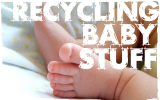Five fantastic reuses for plastic milk bottles
With their semi-rigid sides & strong handle, plastic milk bottles are very easily reusable – which is useful since there are bajillions generated every day.
We’ve had loads of great suggestions about them over the years but here are some of my favourites:
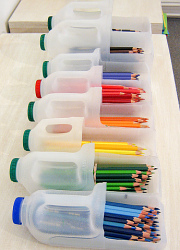 1. Pencil sorter
1. Pencil sorter
Mentioned as a featured link a few weeks ago, I love how neat and practical these containers are for coloured pencils/pens. Stored on a shelf, the lids could be painted the colour of the pencils to make for easy identification.
2. Paint caddy
One close to my heart at the moment because we’re decorating – plastic milk jugs make great paint caddies. 4 pint/half-gallon/2ltr bottles are best for this – cut out the panel of plastic opposite the handle, leave the neck intact for strength and cut down to about half way. The handle is easy to hold (or you could loop some wire/string around it to hang it from a ladder rung) and the caddy holds about 2 pints/1ltr of paint at a time – enough to do a fair amount of painting.
3. Foraging container
SandyM’s family use gallon milk bottles as foraging containers – widen the neck and add a loop of rope or a strong belt through the handle holds it up, leaving both hands free for collecting fruit. In the UK, our bottles tend to be long & thin, so possibly the wrong shape for this – but a great idea if you can get hold of those bigger square bottles.
 4. Bird feeder
4. Bird feeder
One of the original ideas for reusing them – make them into bird feeders. The how-to uses gallon jugs but the same theory can be applied to smaller ones too – I’ve made mini ones for our mini-tree from 1ltr/2pint bottles.
(I’ve also used a plastic milk bottle as a grit hopper for our chickens – same principle as the bird feeder but with stones/shells instead of food. It would be a cruel joke if they didn’t need the grit for digestion.)
5. Scoops
Cut away a wedge from the bottom to make it into a scoop – for scooping flour/grain/animal feed or other dry goods, or at the other end, as a pet poop scoop. Leave the lid on to avoid spills from the other end.
What are your favourite reuses for plastic milk bottles?



 We’ve had an email from Su:
We’ve had an email from Su: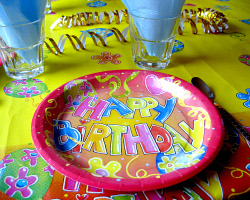 Finishing up our
Finishing up our 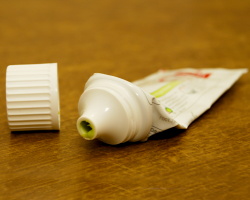 This is cross-posted to my new frugal/growing/making/cooking blog,
This is cross-posted to my new frugal/growing/making/cooking blog, 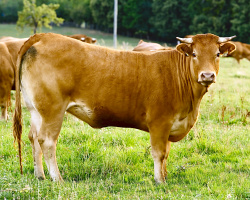 We’ve had an email from Amy:
We’ve had an email from Amy: